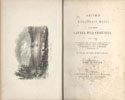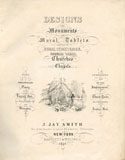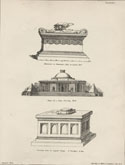Written By John Jay Smith
Guide to Laurel Hill Cemetery, near Philadelphia. Philadelphia: C. Sherman, 1847.
Laurel Hill Cemetery produced guidebooks starting with a quarto edition in 1844, followed by smaller, more portable formats in subsequent years. Visitors located individual graves by consulting the list of lot-holders each guidebook contained. Although his name did not appear on the title page, this 1847 guidebook was almost certainly penned by John Jay Smith himself. At the time, Smith was the Librarian of the Library Company as well as the Secretary for Laurel Hill Cemetery.
R. A. Smith. Smith’s Illustrated Guide to and through Laurel Hill Cemetery. Philadelphia: W. P. Hazard, 1852.
Successful ventures have their imitators. “R. A. Smith” likely hoped purchasers would buy this 1852 knock-off, assuming that he was related to Laurel Hill Cemetery’s then-president John Jay Smith. The Philadelphia city directory for 1852 lists a Robert A. Smith as a “map colourer,” and the guidebook does indeed include a nicely colored map of the north section of Laurel Hill Cemetery. But he is not a known relative of John Jay Smith.
John Jay Smith, 1798-1881. Designs for Monuments and Mural Tablets. New York: Bartlett & Welford, 1846.
In 1846, Smith produced this pattern book “for those who are about to erect a tribute to their deceased friends or to public characters.” Shown here is the tomb of Isaac Hull (1773-1843), which includes an American eagle as an ornament, an allusion to Hull’s distinguished service in the United States Navy. Designs for Monuments is one of three books Smith produced in 1846 using a chemical process of creating facsimiles known as “anastatic printing.” The previous year, Smith had become the American representative for its German inventor and his English partner. A serious drawback, which likely prevented longterm use of anastatic printing, was that the process could cause damage to the original, but in 1846 Smith happily made use of visual material at Laurel Hill Cemetery and the Library Company to show off the technology’s potential.
N. M. Harris, artist. Laurel Hill, Penn. (ca. 1850). Drawing based on illustration in Godey’s Lady’s Book (March 1844). The Burlington Smiths.




